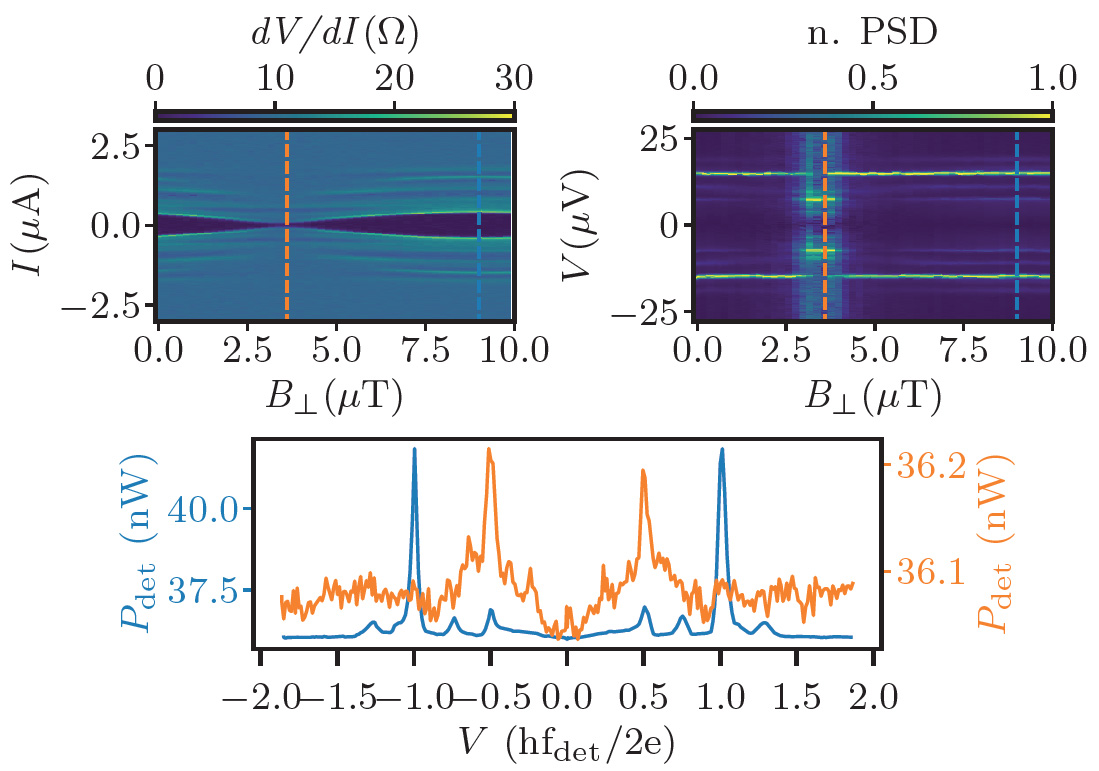suspended CVD graphene
We are thrilled to share our new paper entitled “Charge-4e supercurrent in a two-dimensional InAs-Al superconductor-semiconductor heterostructure” by Carlo Ciaccia.
Supercurrent is carried by Cooper pairs having charge 2e. Accordingly, the second Josephson equation, which relates an AC supercurrent with frequency f to a DC voltage V over the junction, reads: hf=2eV. Carlo Ciaccia and coworkers made use of a pair of highly transparent Josephson junctions arranged in a DC SQUID geometry. When the two junctions are carefully tuned to be “equal” and half of a flux quantum is applied to the SQUID lop, the two current conributions due to the fundamental sin(phi) dependence in the current-phase relation of the two junctions cancel each other. The next remaining non-zero contribution is the second harmonics following sin(2phi). As a result, the fundamental supercurrent is now carried by a quadruple of electrons, i.e. by a pair of Cooper-pairs. The Josephson relation converts to hf=4eV. There are two “cool” features: (a) a supercurrent carried by 4 electrons and (b) a current-phase relation that corresponds to two potential minima. The latter can be used to realize “parity-protected” qubits.

Upper row, left figure: Differential resistance of the DC SQUID as a function of magnetic field applied perpendicular to the plane (yielding a flux through the SQUID loop) and current bias (vertical axis). The position of the orange dashed line corresponds to half a flux quantum through the loop. In the upper row on the right, the Jospehson emission power-spectral density at a fixed frequency around 7GHz is shown. The vertical axis denotes the voltage over the DC SQUID. At half flux quantum the main spectral features swtiches to half the voltage. This halving corresponds to the transition from a 2e supercurrent to a 4e one. Bottom spectrum shows two cuts taken from the power-spectral emission plot in the upper right.









